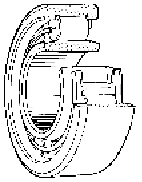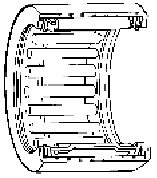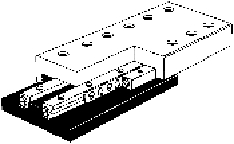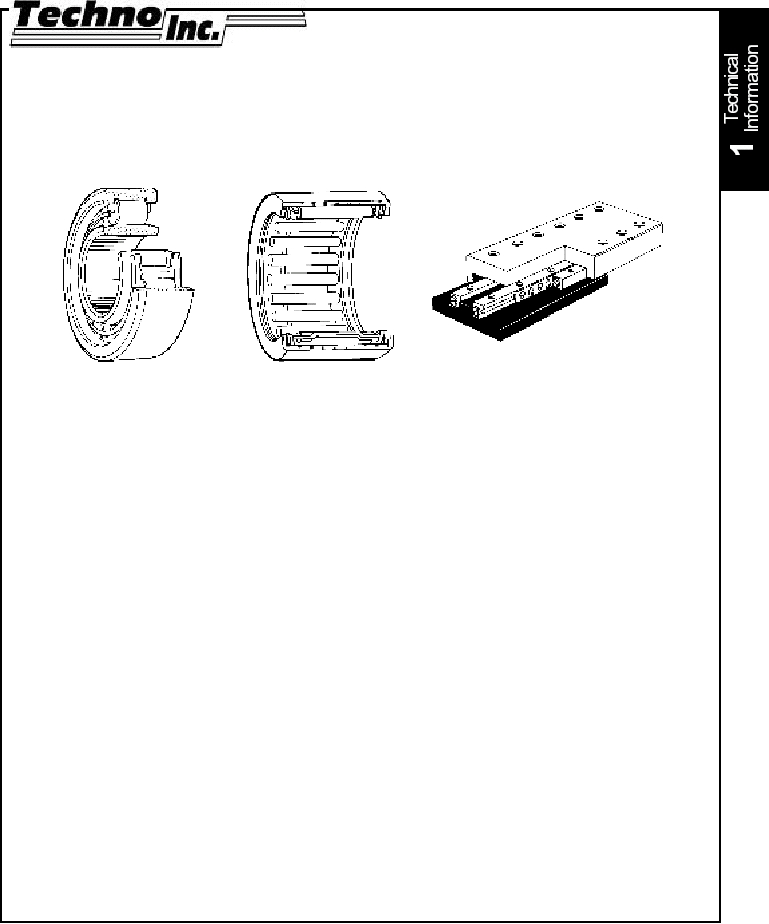Technical Information
techquestions@techno-isel.com
15
Roller Bearings are also widely used in linear / rotary motion applications. There are several principal types
of roller bearings. In general, they have higher load capacities than ball bearings of the same size due to the
increased area of contact and, except for the cylindrical type, lower speed capabilities. They are commonly
used in heavy-duty moderate-speed applications; and, as with ball bearings, there are many different styles
to choose from. Because of the geometry, roller bearings are not tolerant of shaft misalignment.
Cylindrical Roller Bearings have the highest radial load capacity for a given cross section, and the highest
speed capability for any given roller bearing type. A common problem encountered is roller skidding, which
causes premature failure. Solutions include a slightly concave raceway that pinches the ends of the rollers,
or the use of hollow preloaded rollers to hold position.
Needle Roller Bearings are similar in appearance to cylindrical roller bearings, but typically have a much
smaller diameter to length ratio. They typically exhibit higher load capacities than single row ball bearings of
comparable OD, and can nearly fit into the same space as a plain bearing. In most instances, a hardened
shaft acts as the bearings inner race, although an inner race can be supplied when the shaft cannot be
hardened.
Crossed Roller Bearings are very common in heavy-duty precise applications; however, they are extremely
sensitive to contaminants. The principle is similar to that of cylindrical bearings; however, the roller diameter
must be equal to the roller height. The rollers take on an alternating pattern, with their orientations being
crossed at 90 degrees. This arrangement allows very smooth motion, and large load capabilities in all
directions normal to travel. A further benefit of crossed roller bearings is very high straight line accuracy.
Selecting and Sizing Bearing Systems
When selecting and sizing bearings for an application, there are several considerations. Most bearing
applications can be practically analyzed by sizing load and speed requirements. This section is intended to
provide a basic understanding of the bearing selection process, and should not used as an only source.
Plain Bearing Selection: A plain bearing’s load capacity is generally expressed as pounds per square inch
(psi) of projected bearing area. The size and material of the bearing determine most of the load carrying
ability, and there are several rules of thumb to use as a guide.
Maximum load capacity for static or very low-speed applications is 1/3 the bearing
materials compressive limit. The compressive limit is the lowest pressure that results in
plastic (permanent) deformation.
Most plain bearings carry less than 400 psi.
Cylindrical Roller Bearing
Needle Bearing Caged
Crossed Roller Bearing




